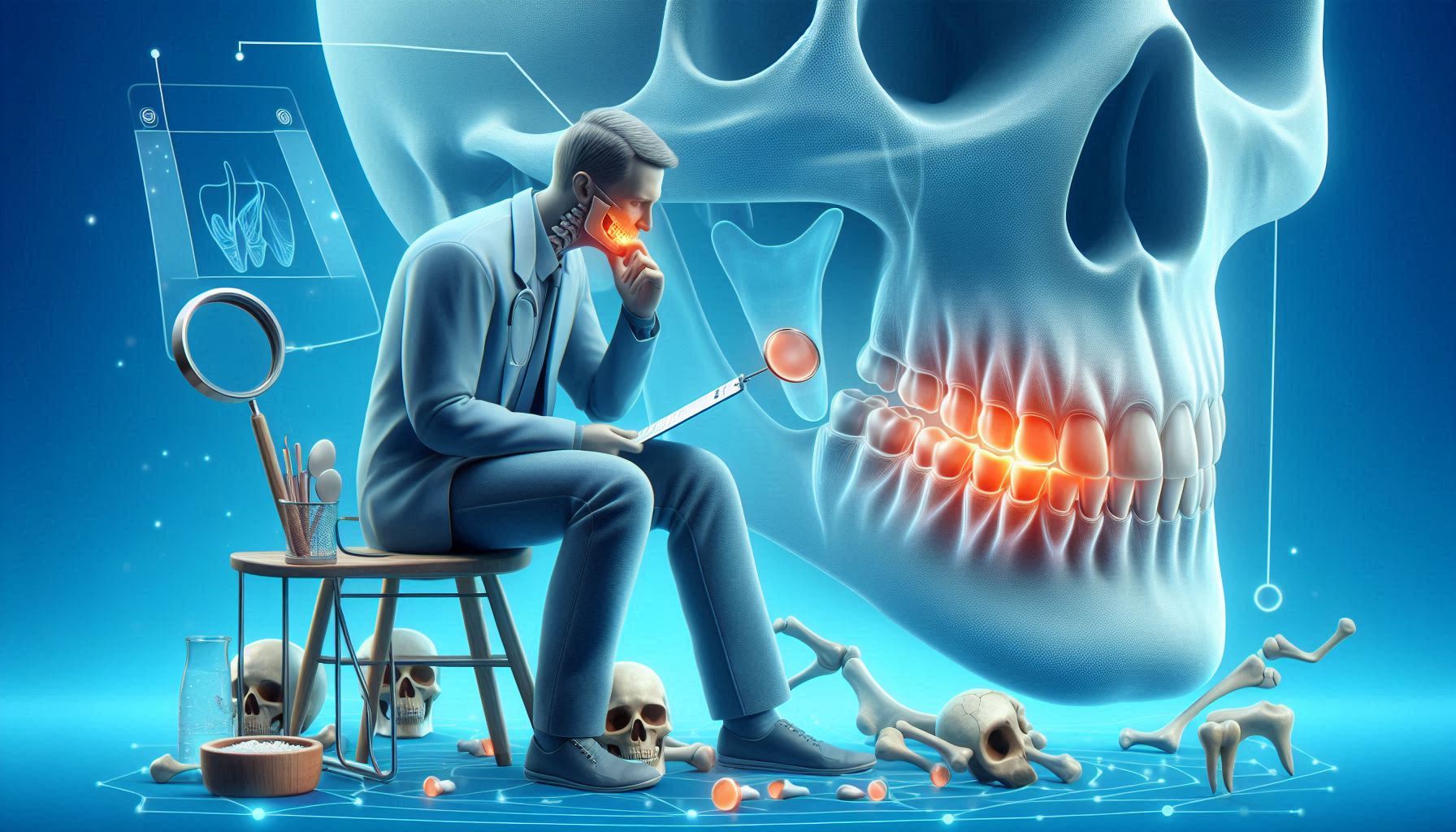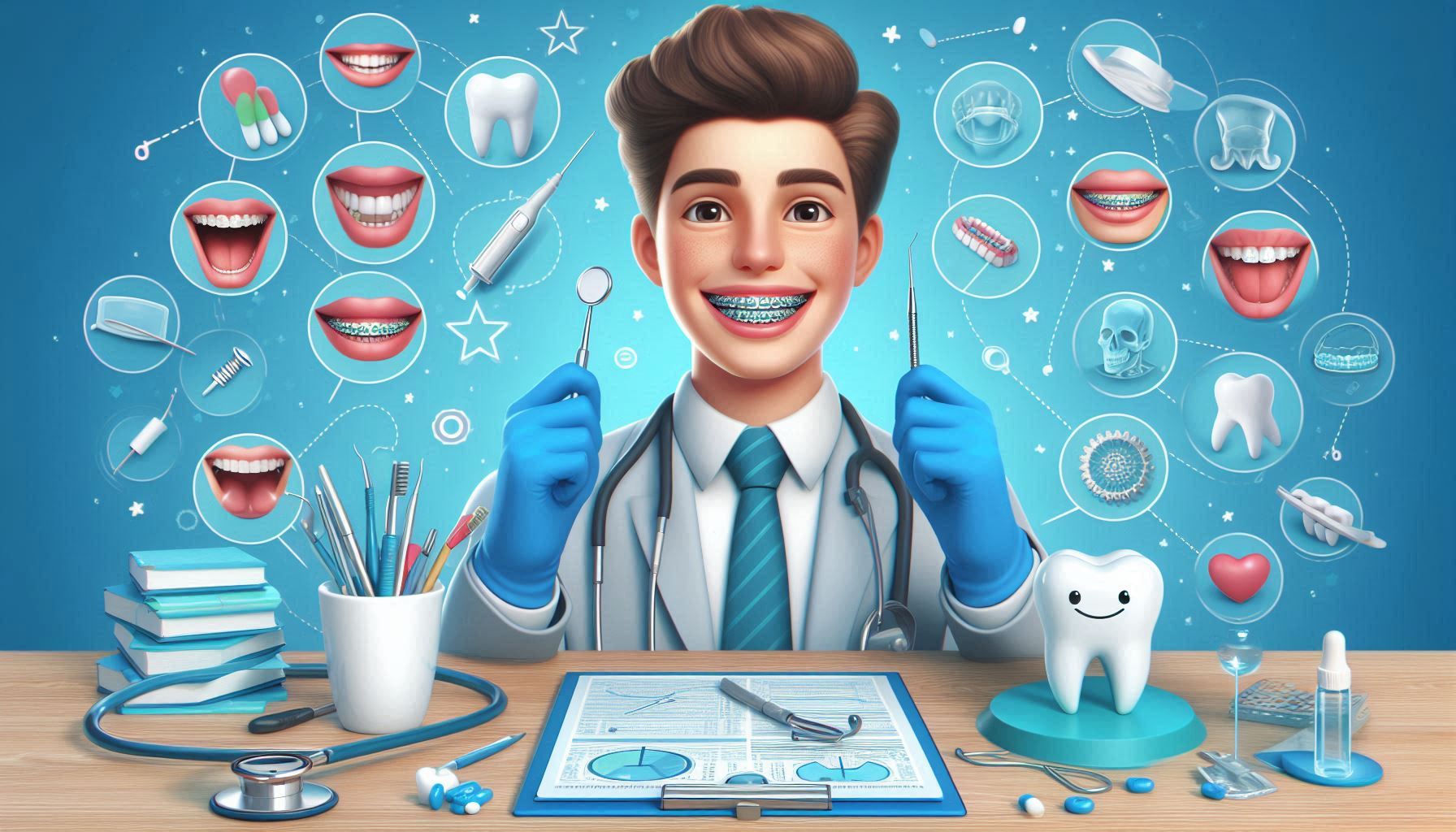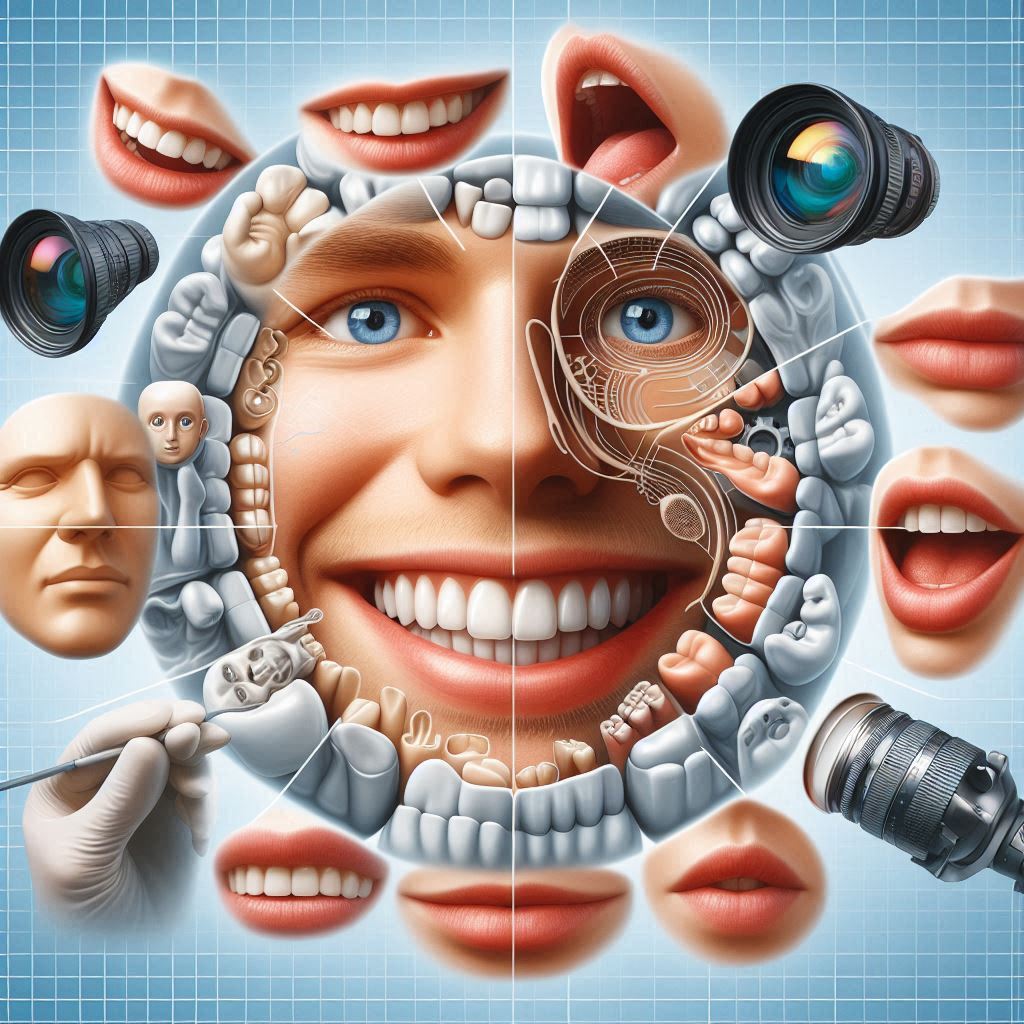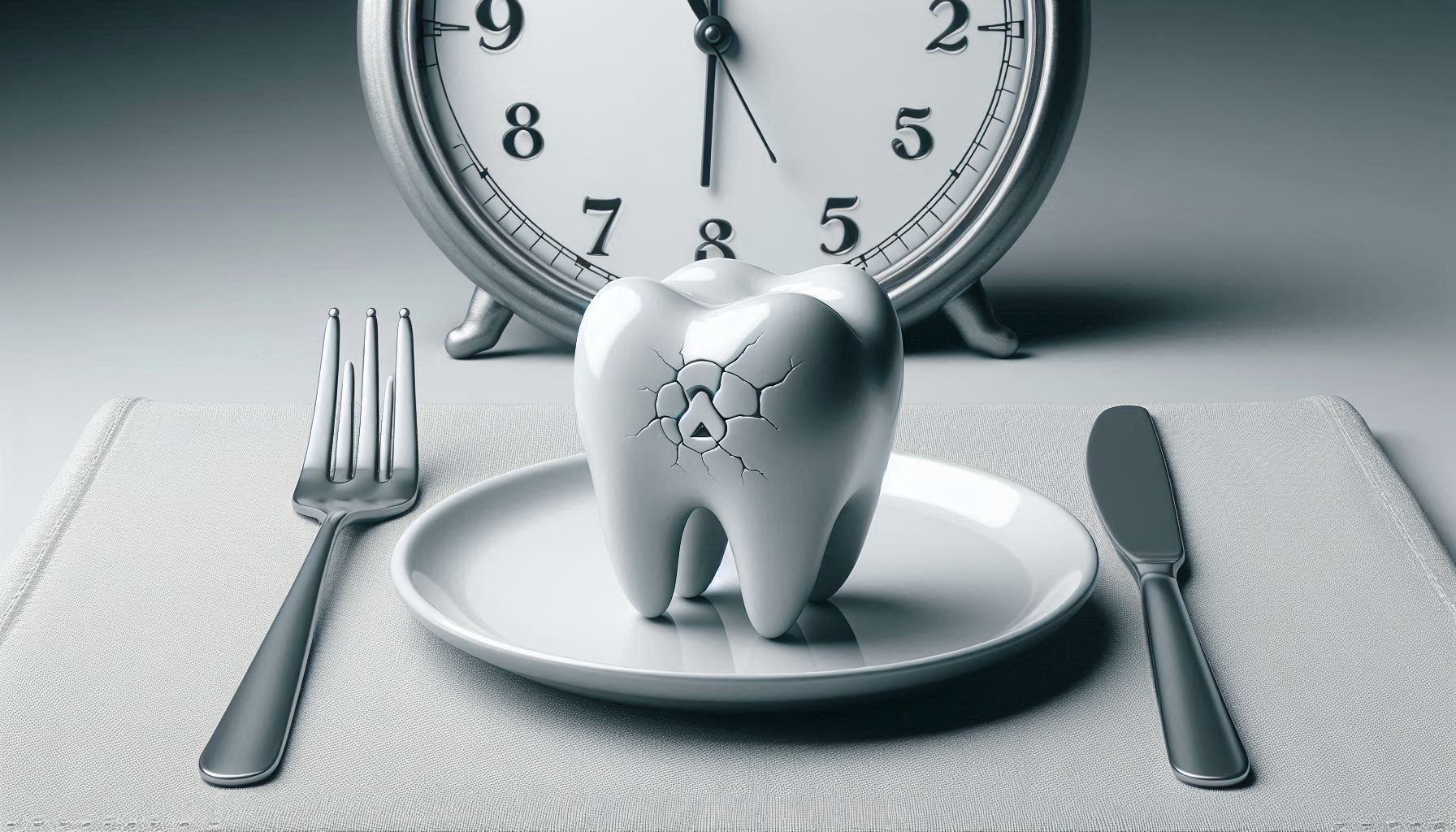Introduction
Osteoporosis is commonly referred to as a “silent disease” because it often develops without noticeable symptoms until a bone fractures or breaks. While it is typically associated with fractures in major bones such as the spine, hips, or wrists, osteoporosis can also manifest in more subtle ways that might not be immediately recognized, one of which is receding gums. In fact, changes in the mouth, such as gum recession, might be one of the earliest and most overlooked indicators of osteoporosis.
This guide delves into how receding gums could serve as a subtle sign of underlying bone loss and osteoporosis. We will explore the connection between bone health and oral health, the biological processes that link the two, and the role dentists can play in identifying osteoporosis before it causes major complications. By gaining a deeper understanding of this relationship, individuals can take steps to prevent or address both osteoporosis and gum disease before they lead to serious health consequences.
Understanding Osteoporosis: The Silent Bone Disease
Osteoporosis is a progressive condition in which bones become porous, weak, and more likely to fracture. It is often called a “silent disease” because it doesn’t produce symptoms until a bone is fractured, at which point the disease is typically quite advanced. The effects of osteoporosis can be devastating, as fractures can lead to chronic pain, loss of mobility, and decreased quality of life.
What Causes Osteoporosis?
The primary cause of osteoporosis is an imbalance in bone remodeling. The human body constantly breaks down and rebuilds bone in a process called remodeling. Bone is resorbed by osteoclasts, and new bone is built by osteoblasts. In osteoporosis, the resorption of bone exceeds the formation of new bone, leading to a decrease in bone mass and density. Over time, this makes bones weaker and more prone to fractures.
Several factors contribute to the development of osteoporosis:
- Aging: As people age, bone mass naturally decreases. In women, the process is accelerated after menopause due to the drop in estrogen levels, which are vital for maintaining bone density.
- Genetics: A family history of osteoporosis significantly increases the likelihood of developing the condition.
- Diet and Nutrition: A diet low in calcium and vitamin D can contribute to weaker bones. Calcium is essential for bone strength, while vitamin D helps the body absorb calcium.
- Physical Activity: Weight-bearing exercises, like walking or strength training, help stimulate bone formation. A sedentary lifestyle can accelerate bone loss.
- Medications: Certain medications, particularly corticosteroids, can contribute to bone loss over time.
The Impact of Osteoporosis on Bone Health
Osteoporosis can lead to several complications, including:
- Fractures: The most common and severe consequence of osteoporosis is fractures, especially in the spine, hips, and wrists. These fractures can occur with minimal trauma, such as bending over or lifting a light object.
- Loss of Height and Posture: As the spine weakens, it may collapse or compress, leading to a decrease in height and a stooped posture.
- Chronic Pain: Vertebral fractures, especially in the spine, can lead to chronic back pain that significantly affects an individual’s quality of life.
The Link Between Oral Health and Bone Health
Oral health is often seen as a separate issue from overall bone health, but the two are deeply interconnected. The jawbone, which supports the teeth, is like any other bone in the body and can be affected by the same processes that cause osteoporosis.
The Role of the Jawbone in Oral Health
The jawbone, or alveolar bone, is critical for the stability and health of the teeth. When the jawbone becomes weak or loses density, the teeth lose support, which can lead to tooth mobility, tooth loss, and gum recession. When osteoporosis affects the jawbone, it can lead to these visible dental problems, signaling that the individual may have more widespread bone loss in other parts of their body.
The jawbone is also unique in that it is more susceptible to the effects of osteoporosis than other bones. This is because it is constantly subjected to forces from chewing, which can further stress weakened bone tissue.
How Osteoporosis Affects the Gums and Teeth
As the jawbone loses density, the gums may begin to recede. The alveolar bone serves as an anchor for the teeth, and as it weakens, it may cause the gums to pull away from the teeth. Receding gums can expose the roots of the teeth, leading to increased sensitivity, a greater risk of cavities, and potential tooth loss. Additionally, the weakening of the bone and supporting structures in the mouth can make the teeth more mobile, increasing the risk of them becoming loose and eventually falling out.
Osteoporosis-related changes in the jawbone can also exacerbate periodontal disease. The inflammation and infection that occur with periodontal disease can further weaken the bones and gum tissues, creating a vicious cycle of bone loss and gum recession.
Receding Gums: An Early Indicator of Osteoporosis?
Receding gums, or gingival recession, is a common issue in older adults. However, when paired with other risk factors for osteoporosis, receding gums may point to a more systemic problem of bone loss throughout the body.
The Connection Between Bone Density and Gum Health
Research has shown that individuals with osteoporosis often experience dental issues, including receding gums, more frequently than those without osteoporosis. This is because bone density is closely tied to gum health, particularly in the jaw. When bone density decreases, the structural integrity of the gums is compromised, making them more susceptible to recession. As bone loss in the jaw progresses, it not only affects the appearance of the gums but also the long-term health of the teeth and the mouth as a whole.
A study published in the Journal of Periodontology found that postmenopausal women with low bone density were more likely to experience periodontal disease, a condition that often leads to receding gums. The connection between bone health and gum health is increasingly recognized by dental and medical professionals, underscoring the need for a holistic approach to health that considers both bone and oral care.
Why Are Gums Affected by Osteoporosis?
Osteoporosis weakens the jawbone, but it may also impact the ligaments and tissues that hold the teeth in place. As the jawbone deteriorates, the gums begin to recede, and teeth become looser. The gums may pull away from the teeth, making them more vulnerable to infection, decay, and other dental issues. This can lead to a cycle of worsening oral health, which can exacerbate the impact of osteoporosis.
In addition to weakening bone structure, osteoporosis can reduce blood flow to the gums, further impairing gum health. Without proper blood circulation, the gum tissues struggle to repair themselves, leading to more significant issues with gum recession.
Identifying Osteoporosis Early Through Dental Care
Since osteoporosis often does not show symptoms until a fracture occurs, identifying it early can be difficult. However, receding gums and other oral health changes may serve as a red flag for an underlying bone density problem. This creates an opportunity for early intervention.
The Role of Dentists in Detecting Osteoporosis
Dentists play a crucial role in the early detection of osteoporosis. Through routine dental exams, they can assess the health of the gums and teeth, including any signs of bone loss in the jaw. Dentists are trained to recognize the symptoms of osteoporosis, such as loose teeth, gum recession, and changes in bone density on X-rays.
If a dentist suspects that a patient has osteoporosis, they may recommend a referral to a physician for further evaluation, including a bone density scan (DXA scan). By catching osteoporosis early, individuals can take steps to prevent fractures and manage the condition before it progresses.
Using Dental X-rays to Assess Bone Density
One of the primary tools that dentists use to assess bone health is dental X-rays. These images allow dentists to examine the bone density of the jaw, which can reveal early signs of osteoporosis. While dental X-rays do not provide a full picture of overall bone health, they can alert dentists to the need for further investigation. If significant bone loss is observed in the jaw, the dentist may recommend a bone density test to determine whether osteoporosis is present in the rest of the body.
Risk Factors for Osteoporosis and Receding Gums
Several common risk factors contribute to both osteoporosis and receding gums. These include aging, hormonal changes, poor diet, and smoking. Understanding these risk factors can help individuals take steps to prevent both conditions and protect their bone and oral health.
Hormonal Changes and Aging
Hormonal changes play a significant role in the development of both osteoporosis and gum recession. In women, the decrease in estrogen after menopause accelerates bone loss, increasing the risk of osteoporosis. Estrogen also helps maintain gum health, so a drop in estrogen can make the gums more prone to recession. Aging itself is also a risk factor for both osteoporosis and gum disease, as bone density naturally decreases with age, and gum tissues become less resilient.
Poor Diet and Nutrition
A diet that is low in essential nutrients, particularly calcium, vitamin D, and vitamin C, can contribute to both osteoporosis and gum disease. Calcium and vitamin D are critical for maintaining bone density, while vitamin C is important for gum health. Without these nutrients, the body cannot maintain healthy bones or gums, making them more susceptible to damage.
Smoking and Alcohol Consumption
Both smoking and excessive alcohol consumption are significant risk factors for osteoporosis and receding gums. Smoking reduces blood flow to the gums, impairing their ability to heal and regenerate. It also contributes to bone loss. Similarly, heavy alcohol consumption can disrupt the body’s ability to absorb calcium and lead to bone thinning.
Preventing and Managing Osteoporosis and Receding Gums
Prevention and early intervention are key to managing both osteoporosis and receding gums. With the right lifestyle choices and treatments, individuals can protect their bone and oral health.
Maintaining Bone Health
Preventing osteoporosis involves maintaining a healthy lifestyle, including regular weight-bearing exercise, a diet rich in calcium and vitamin D, and avoiding smoking and excessive alcohol consumption. Weight-bearing exercises like walking, jogging, and resistance training help stimulate bone formation and prevent bone loss. Calcium-rich foods such as dairy products, leafy greens, and fortified foods should be included in the diet, along with sufficient vitamin D from sunlight and supplements if necessary.
Protecting Gum Health
Good oral hygiene is essential for preventing gum disease and recession. Brushing twice a day with fluoride toothpaste, flossing daily, and visiting the dentist regularly for cleanings and checkups are key practices in maintaining healthy gums. Additionally, maintaining a healthy diet and avoiding tobacco use can help prevent gum recession.
Treatments for Osteoporosis
Individuals with osteoporosis may be prescribed medications such as bisphosphonates, hormone replacement therapy, or bone-building agents like denosumab and teriparatide. These treatments help slow bone resorption and promote bone formation. Medications can help prevent fractures and improve bone health throughout the body, including the jawbone. When osteoporosis is managed, individuals are less likely to experience complications like tooth loss and gum recession.
Conclusion
Osteoporosis is often called a “silent disease” because it typically remains undiagnosed until a bone fracture occurs. However, early signs, such as receding gums, can provide important clues to its presence. Understanding the link between bone health and oral health is crucial for individuals to take proactive steps in managing both. Changes in the mouth, particularly the gums, can signal the early onset of bone density issues. For instance, as the jawbone loses density due to osteoporosis, the gums may begin to recede, causing tooth sensitivity, gum inflammation, and even tooth loss. Regular dental checkups are vital for identifying these subtle changes early. Dentists are trained to spot signs of bone loss in the jaw during routine exams and X-rays. If receding gums or other oral health issues are detected, a dentist may recommend a referral for further testing, such as a bone density scan, to check for osteoporosis. Early detection allows for intervention before the disease leads to fractures or significant complications.
In addition to dental care, maintaining bone health requires a holistic approach that includes lifestyle changes, a balanced diet, and appropriate medical treatments. Weight-bearing exercises, like walking or strength training, can help preserve bone mass. A diet rich in calcium, vitamin D, and other essential nutrients supports bone strength, while avoiding smoking and excessive alcohol consumption reduces the risk of bone loss. With the right attention to both oral and bone health, it’s possible to prevent or manage osteoporosis and gum disease. By staying vigilant about changes in the mouth and adopting a healthy lifestyle, individuals can ensure better quality of life as they age, reducing the risk of fractures and preserving oral health.
SOURCES
Ammann, P., & Rizzoli, R. (2003). Bone strength and osteoporosis: The role of bone quality. European Journal of Endocrinology, 149(6), 219-225.
Bertoldo, F., & Gatti, D. (2013). Osteoporosis and periodontal health: The impact of bone resorption in periodontal tissues. Journal of Clinical Periodontology, 40(8), 729-737.
Britt, E. L., & Blum, S. E. (2010). Osteoporosis and oral health: The role of dental professionals in the early diagnosis of bone disease. Journal of the American Dental Association, 141(7), 878-885.
Dawson, L. L., & Hughes, L. A. (2012). Osteoporosis, osteoporosis treatment, and periodontal disease: A review of the literature. Clinical Oral Investigations, 16(6), 1377-1383.
Dunning, D., & Taylor, H. (2014). The impact of osteoporosis on oral health: Implications for clinical practice. Dental Clinics of North America, 58(3), 525-538.
Huang, P. Y., & Tan, T. Y. (2017). Receding gums and their relationship with systemic bone loss. Journal of Periodontology, 88(4), 377-382.
Iida, M., & Okada, M. (2015). Association between osteoporosis and periodontal disease: A systematic review. Bone, 72, 220-225.
Khan, S. A., & Zawawi, K. H. (2019). The role of dental X-rays in detecting early signs of osteoporosis. Journal of Clinical Dentistry, 32(4), 242-247.
Marsh, A., & Gardner, D. (2018). Osteoporosis and its effect on oral health: The dentist’s perspective. Oral Health and Preventive Dentistry, 16(1), 65-73.
Misch, C. E., & Dietrich, T. (2011). Relationship between osteoporosis and periodontal disease: Current evidence and clinical management. Journal of Periodontal Research, 46(2), 124-130.
Spath, H. R., & Dreyer, E. A. (2016). Bone density and its relationship to oral health: Receding gums as an early indicator of osteoporosis. The Journal of the American Dental Association, 147(12), 924-930.
Taylor, G. W., & Manz, M. C. (2011). The relationship between periodontal disease and osteoporosis. Periodontology 2000, 56(1), 111-122.
Tobin, L. M., & Spivak, A. (2014). Osteoporosis and oral health: An update on recent findings. Journal of Clinical Oral Investigations, 18(5), 1223-1230.
Vargas, E., & Hayes, J. T. (2015). The link between periodontal disease and systemic health: What the dental practitioner should know. Oral Diseases, 21(1), 8-14.
Zhao, J., & Yang, M. (2017). Osteoporosis and its effects on periodontal health: A comprehensive review. Journal of Periodontal Research, 52(3), 389-396.
HISTORY
Current Version
January 17, 2025
Written By:
SUMMIYAH MAHMOOD




